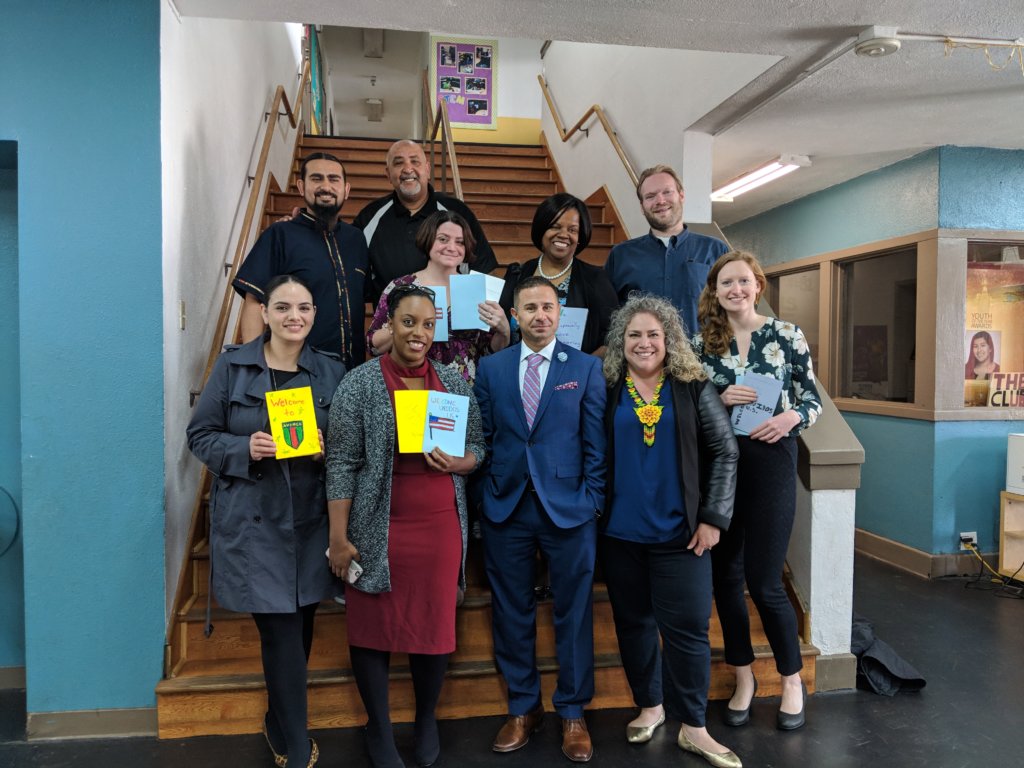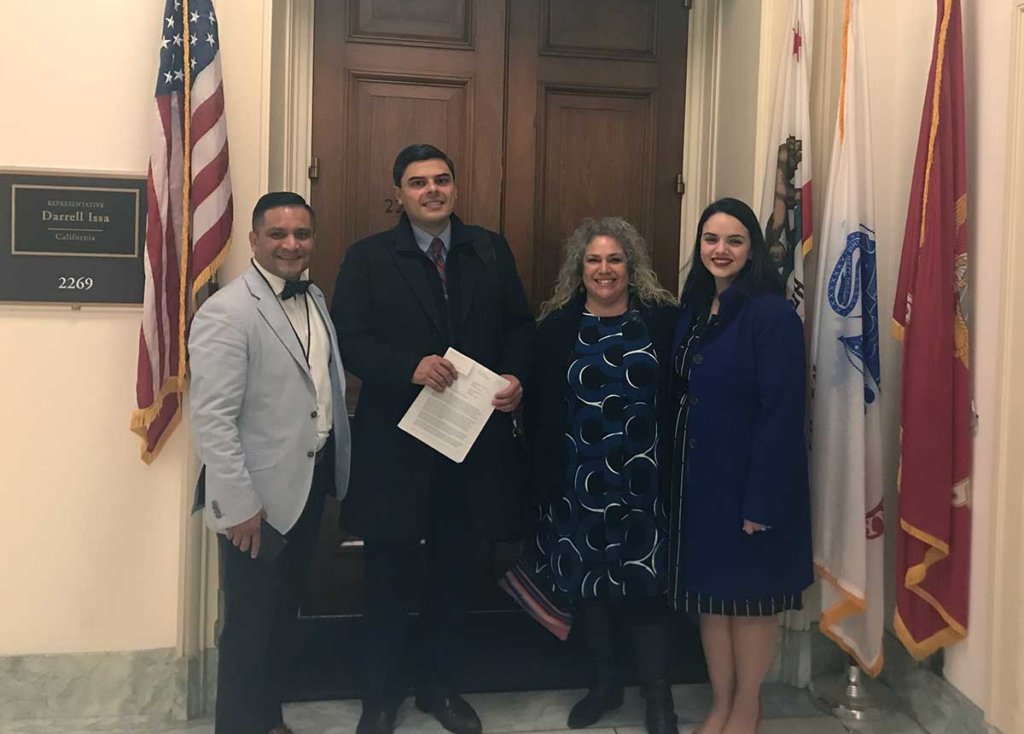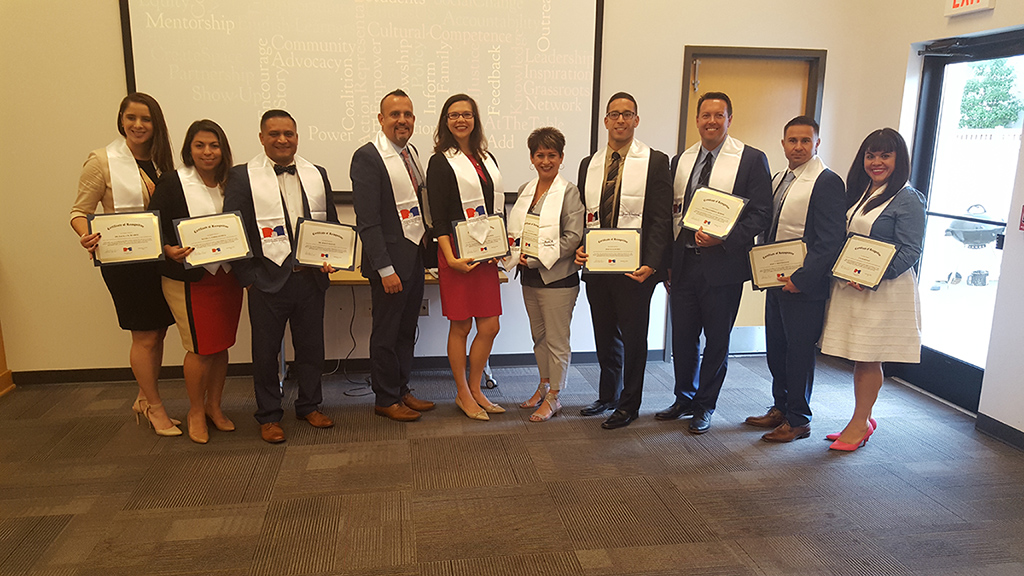COMMENTARY: Separate Cannot Be Equal (The Ongoing Fight for Equity for Children in the Classroom)
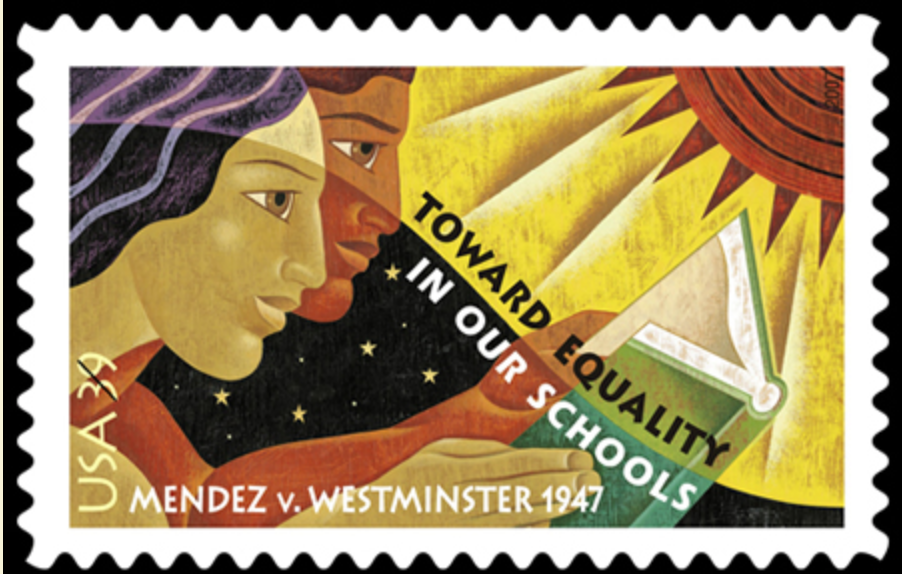
Author Devon Teran is an UnidosUS National Institute of Latino School Leaders Fellow
In the middle of the 20th Century, activists scored historic victories by winning the court-ordered integration of public schools. They helped transform the American public education system, once a bastion of inequality, and make it a pathway for realizing civil rights. But the fight took longer than many think. In fact, there still are battles to be won.
The beginning of the end for segregated schools came on April 14, 1947, when the U.S. Ninth Circuit Court of Appeals ruled in favor of a Mexican American couple that wanted to enroll their nine-year-old daughter, Sylvia Mendez, in a Whites-only public school in the Orange County, California, Westminster School District. The court ruled that public education was the gateway to social equality, so, “It must be open to all children by unified school association regardless of lineage.”
The Mendez v. Westminster ruling marked the first time a court had found that segregation itself is unconstitutional. California ended legal segregation of schools the next year. But schools remained segregated in other states until another landmark case, Brown v. Board of Education, forever changed the landscape of public schools in America.
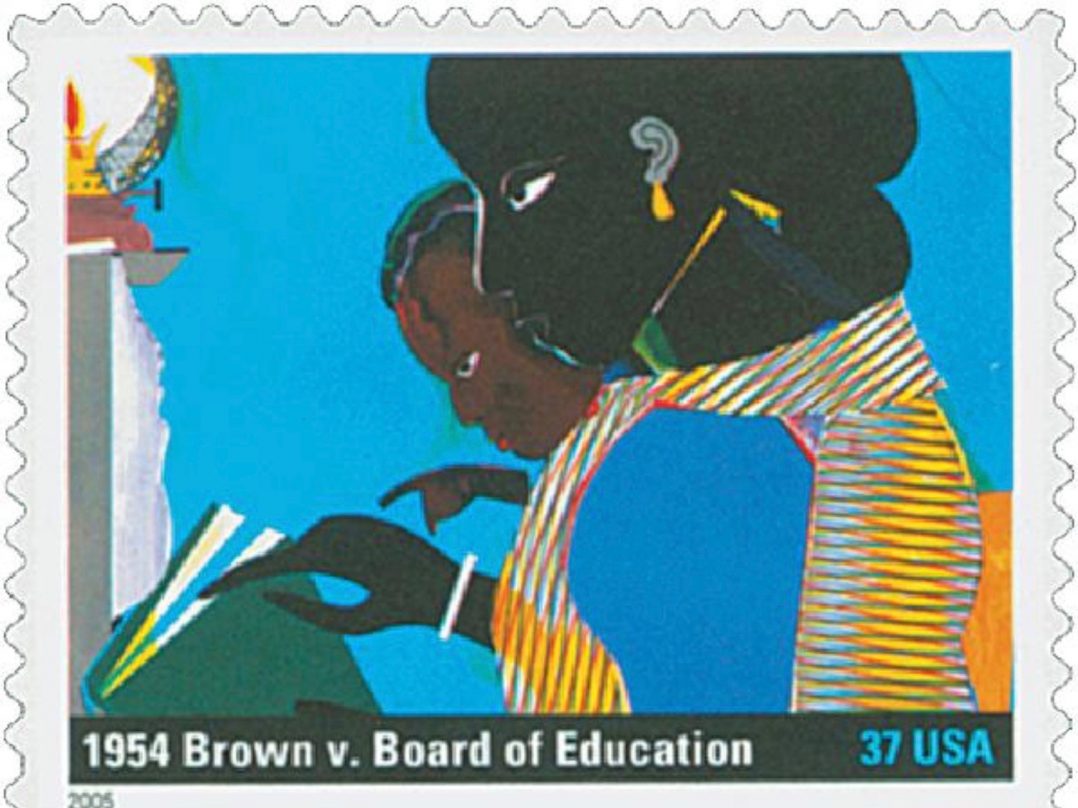
Legendary lawyer Thurgood Marshall, one of the most prominent Black civil rights attorneys of the 20th century, wrote an amicus brief for the NAACP in the Mendez case. He went on to use many of the same arguments before the Supreme Court on behalf of Linda Brown, who was being barred from an all-White school in Topeka, Kansas. Marshall, who was the NAACP’s chief legal counsel, told the justices that segregation “necessarily imports inequality.”
In that landmark case, Chief Justice Earl Warren, who had been California’s governor during the Mendez case, wrote the majority opinion ruling it was unconstitutional for any U.S. state to legislate racial segregation in public schools, regardless of whether those schools were considered equal in quality. The decision kicked off the process of integrating schools across the United States and made public education a vehicle for accessing basic rights, instead of an obstacle to equal treatment.
Unfortunately, the strategies that we adopted as a nation did not set everything right. One unforeseen consequence of the ruling was that many school districts integrated schools by firing experienced Black educators and bringing Black students into formerly all-White schools, rather than sending White students to be taught by teachers of color in the old all-Black schools.
Malcolm Gladwell’s podcast Revisionist History explores the ramifications of Brown in depth in its second season (Miss Buchanan’s Period of Adjustment). Gladwell begins and ends the podcast with a Black teacher reading from her letter of dismissal from Topeka Kansas Public Schools, the very district where Brown v. Board of Education was fought and won on behalf of students of color. “Dear Miss Buchanan,” she reads, “Due to the present uncertainty about enrollment next year, it is necessary for me to notify you now that your services will not be needed for next year.”
The same pattern happened across the country. While Brown v. Board of Education was a major victory for civil rights, we are still recovering from the staffing decisions those districts made. The gap between the percent of students of color and representation of educators of color is one of the ongoing, and potentially one of the most important battles in education and civil rights.
Supporting Latinos Students by Supporting Latino Teachers
This problem has gotten worse under the current education secretary, Betsy DeVos. She has made ongoing attempts to deregulate or avoid providing accountability and oversight. She has led the Department of Education’s Office of Civil Rights to investigate far fewer cases civil rights abuses against LGBTQ+ students, and allowed public funds to be diverted to private and religious schools. She has tried to close the Federal English Learner Office. Given this track record, it’s hard to imagine the Department of Education reasserting its historic role in the protection of civil rights for students and educators during the current administration. But that’s something we should all be advocating for as we approach the 2020 elections.
One way to accomplish this is to make schools and district offices more reflective of the ethnically diverse communities they serve. Latinos, and all students, benefit from schools that are integrated and diverse, but too often the heavy lifting of integration is left to the students and families with the least agency. School districts and the Department of Education can improve outcomes for students by supporting the recruitment and retention of Latino educators. But it’s going to take a lot of research and effort to do it well.
Currently Latino educators are unevenly spread across the country. Predictably, there are higher concentrations across the South and in major metropolitan areas, in communities with the highest concentrations of Latino residents. And yet, the demographics of our educators lags significantly behind the demographics of our students. Currently one student in four is Latino. According to the National Center for Education Statistics, the highest representation of Latino teachers is New Mexico (37.8%) followed by Texas (27.4%), but in 40 states, Latinos are less than 3% of the teacher workforce (NTPS). And a November 2019 report from Spectrum News showed that more than 200 of the state of New York school districts do not employ a single teacher of color.
The rate of Latino teachers entering the profession is steadily increasing, and this could shape countless experiences for students—if these educators stay in the profession. The Department of Education’s State of Racial Diversity in the Teacher Workforce Report (2016), notes that between 2012 and 2013, 85% of White teachers taught in same building, a key metric of teacher retention. By comparison, only 79% of Latino teachers and 78% of Black teachers remained in place in the same period. The Albert Shanker Institute’s report The State of Teacher Diversity (2015) found that the annual rate of turnover was 15% for White teachers, and 18.9% for minority teachers.
There is no requirement and no infrastructure to collect data on why teachers leave the profession. What we do know is that when the Department of Education requires schools to report data, schools use that data to make decisions. The Department of Education can improve outcomes for students and Latino educators by requiring school districts and states to include plans for supporting educators of color and requiring schools to collect report data on teacher retention by race and ethnicity.
Requiring districts, as part of their Title II grant applications, to include plans for supporting Latino and other culturally diverse educators and requiring the reporting of recruitment and retention data can lead to significant improvement in supporting Latino educators. The current reality is that when districts must plan, collect, and report, improvement happens.
Supporting Latinos Educators in the Pipeline
There is some good news when we look at the pipeline for educators. Latinos are more likely than other groups to apply for teaching positions after college. In 2007, 18% of Latino bachelor’s degree recipients who prepared to teach reported applying to teaching positions compared to 14% of all such degree recipients. Even though we don’t have all the information and data on why Latino teachers leave the profession, we have some important clues. For starters, scholarships, Pell Grants, and student loans are all significant in the lives of those future educators. Plus, 61% of Latino college students are first generation college students, and the complexities of our current systems make it hard for families and students to navigate that experience. These students often graduate with a lot of debt, only to discover how hard it is to pay them down on a modest teacher’s salary. To make matters worse, nearly all teachers are turned away from the U.S. government’s loan forgiveness program, which rejects 99% of all applications.
The Department of Education can further support districts and states by incentivizing the use of Title II funds to create Grow Your Own Teacher type programs and allow states to use funding to support alternative teaching programs that help non-traditional teachers enter the classroom.

Supporting Opportunities for Latino Students
In an excellent interview with the Wilson Center, Philippa Strum, author of Mendez v. Westminster: School Desegregation and Civil Rights, examines some of the finer details of the case. Strum argues that Hispanic people were considered White at the time, so technically the case was not about race. Instead, this was a case about ethnic discrimination. An excerpt from that interview:
Milewski (Host): But part of what those schools is saying, is it’s also about language
skills.
Strum: Yeah, what they said essentially is “these kids can’t speak English. . . It was total, total nonsense. First of all, the school didn’t know if they spoke English because they gave them no test. . . Then as emerged in the trial, the authorities also thought of these kids as morally different, as dirty, as diseased. And this was the way they thought about Mexican Americans generally.
The reality is that these perceptions exist today in ways that are sometimes harder to pinpoint. The ugly truth is that the language of academic readiness was used to segregate schools in 1947, and it still is today. Schools serving concentrations of Latino and Black students are less likely to offer rigorous academic opportunities that prepare students for college, careers, and beyond. A recent article from the educational advocacy group Ed Trust depicts the gap between Latino and Black students and the general population. The hard truth of my own experience as a school leader in minority majority urban schools, is that yes, my students enter with significant learning gaps, often several grade levels behind their wealthier peers. It is also true, that when we give our students highly rigorous opportunities and support them with high expectations, they rise to any occasion. When teachers and schools begin to teach from a mindset that begins with student assets and strengths, students can close any gap with the skills they bring to the table. It is the role of the school and the teacher to coach students through their gaps. Isn’t that what teaching is all about?
The Department of Education has an important role to play in holding all schools accountable to offer highly rigorous programming for all students. Continued support for high standards and school accountability is essential. Like desegregation, where we focused on students instead of teachers, this is an area where we can turn our attention to better supporting the adults so that they can support the students. Part of any state or district plan to use Title II funds for supporting diverse educators, should also include the support of diverse learners. Teachers who are better trained in culturally relevant pedagogy will be more effective in supporting our diverse students, and more likely to enjoy a longer career in the classroom.
In addition to supporting teacher learning, the Department of Education can specifically support English Learners (ELs) by increasing funding for Language Learning programs through Title III. From 2009 to 2016, there was an 11.5% increase in the EL population, but only a 1% increase to Title III funding. Furthermore, a 2020 UnidosUS fact sheet on Latino students and ELs shows that schools with 90% or more students of color spend $733 less per year per student than schools with 90% or more White students.
After her family won the lawsuit, Sylvia Mendez finished her education and became a pediatric nurse. After a career of 30 years, she dedicates her time to preserving the memory of her parents and the legacy of their advocacy. In 1998, Santa Ana named a new school for her parents, the Gonzalo and Felicitas Mendez Fundamental Intermediate School. In 2011, she received the Presidential Medal of Freedom from President Obama, and for her contributions, in 2018, Berkeley Unified School District renamed a school in her honor. What began as parents advocating for their children, and later their community, went on to be the template for how our entire nation can be better.
Education work is civil rights work, and I am convinced teachers take the lead in it when they stand before their students in America’s classrooms. To continue that legacy, it is essential that we support our educators of color. The role of the Department of Education is to ensure civil rights for all students starts with shaping the conversations schools have for supporting students and teachers. By focusing our attention on the recruitment and retention of Latino educators, and supporting all educators of color, we honor the legacy of Sylvia Mendez and everyone else who fought to prove to us that separate cannot be equal.



